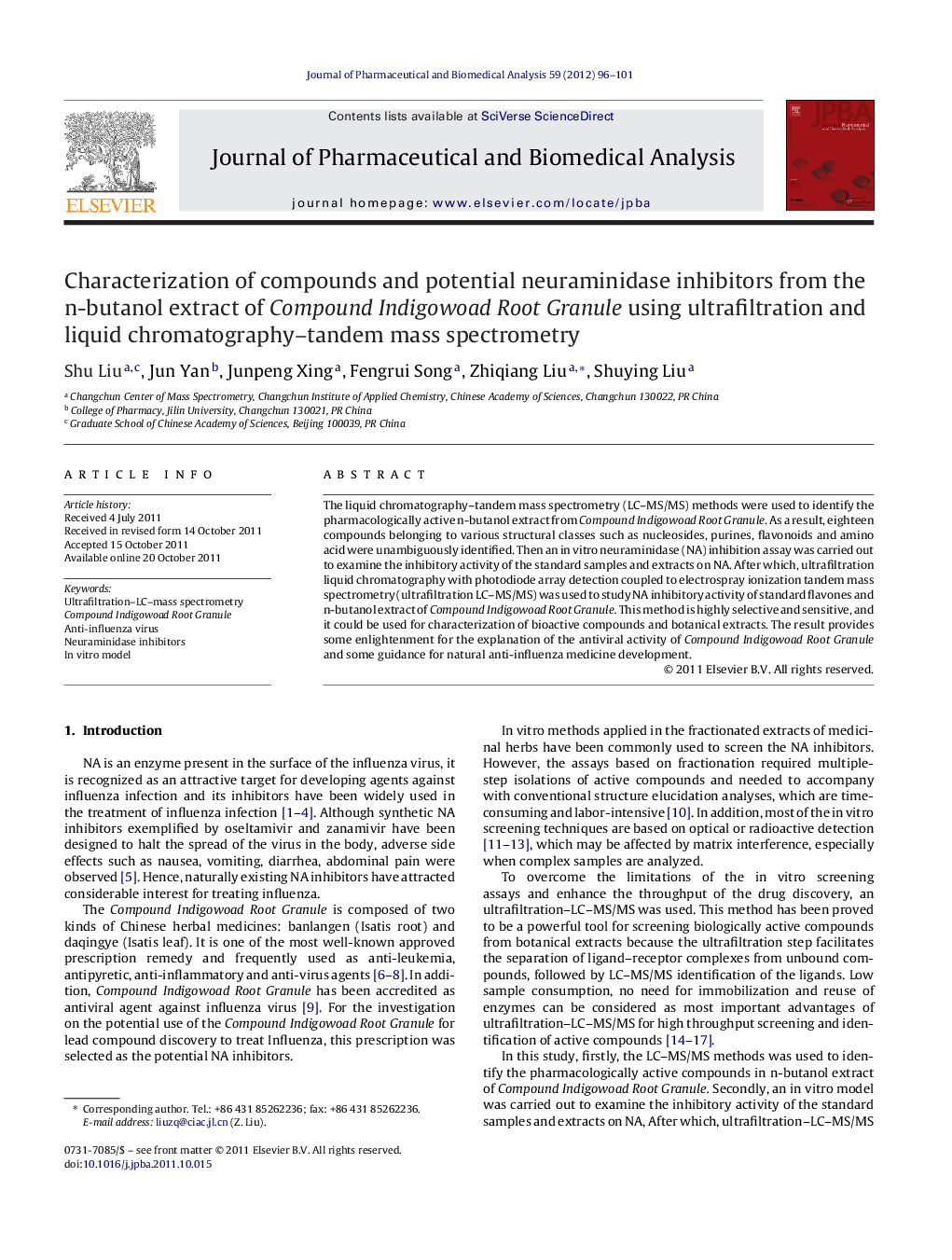| Article ID | Journal | Published Year | Pages | File Type |
|---|---|---|---|---|
| 1222487 | Journal of Pharmaceutical and Biomedical Analysis | 2012 | 6 Pages |
The liquid chromatography–tandem mass spectrometry (LC–MS/MS) methods were used to identify the pharmacologically active n-butanol extract from Compound Indigowoad Root Granule. As a result, eighteen compounds belonging to various structural classes such as nucleosides, purines, flavonoids and amino acid were unambiguously identified. Then an in vitro neuraminidase (NA) inhibition assay was carried out to examine the inhibitory activity of the standard samples and extracts on NA. After which, ultrafiltration liquid chromatography with photodiode array detection coupled to electrospray ionization tandem mass spectrometry (ultrafiltration LC–MS/MS) was used to study NA inhibitory activity of standard flavones and n-butanol extract of Compound Indigowoad Root Granule. This method is highly selective and sensitive, and it could be used for characterization of bioactive compounds and botanical extracts. The result provides some enlightenment for the explanation of the antiviral activity of Compound Indigowoad Root Granule and some guidance for natural anti-influenza medicine development.
► The LC–MSn method was used to identify the active compounds from Compound Indigowoad Root Granule. ► An in vitro model was used to examine the inhibitory activity of compounds on neuraminidase. ► The ultrafiltration–LC–MSn was a highly selective, sensitive and high throughput method. ► The ultrafiltration–LC–MSn method was used to screen neuraminidase inhibitors from butanol extract of Compound Indigowoad Root Granule.
